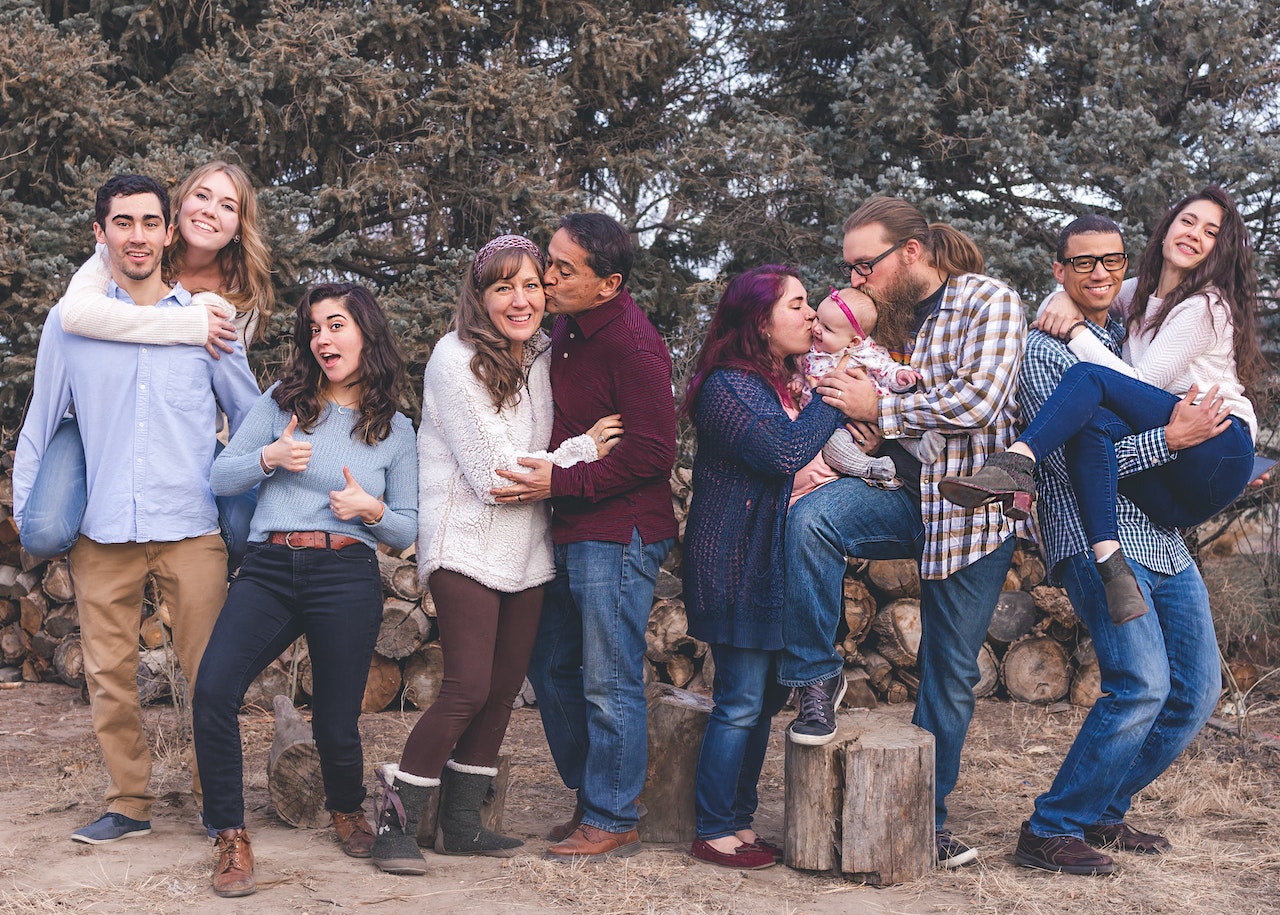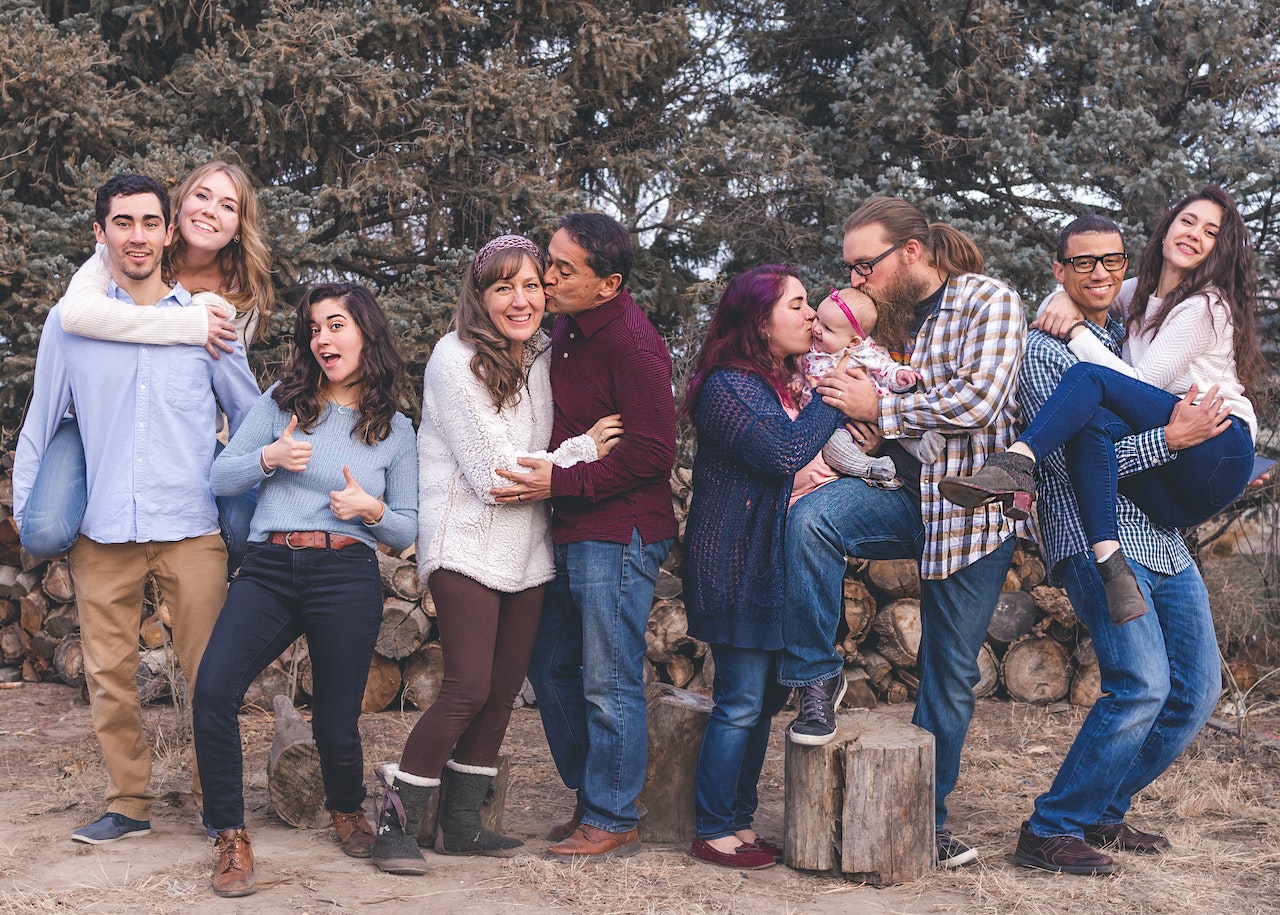Healthy Boundaries: Setting Limits and Maintaining Respect in Relationships
Welcome, dear readers, to the intriguing world of healthy boundaries! In this article, we embark on a journey to discover the art of setting limits and maintaining respect in relationships. Boundaries are like the invisible fences that define our personal space, emotional well-being, and values. They play a crucial role in fostering healthy connections and maintaining a sense of self. But let's face it, navigating boundaries can be tricky. Fear not, for we are here to guide you through this fascinating realm in an entertaining and enlightening way. So, grab a cup of tea, find a comfy spot, and let's delve into the world of healthy boundaries!
Healthy Boundaries: Setting Limits and Maintaining Respect in Relationships
Welcome, dear readers, to the intriguing world of healthy boundaries! In this article, we embark on a journey to discover the art of setting limits and maintaining respect in relationships. Boundaries are like the invisible fences that define our personal space, emotional well-being, and values. They play a crucial role in fostering healthy connections and maintaining a sense of self. But let's face it, navigating boundaries can be tricky. Fear not, for we are here to guide you through this fascinating realm in an entertaining and enlightening way. So, grab a cup of tea, find a comfy spot, and let's delve into the world of healthy boundaries!


Understanding Boundaries
The Boundary Basics - What Are They?
Boundaries are the invisible lines that separate our thoughts, emotions, and physical space from others. They are the personal limits we set to protect our well-being, maintain our autonomy, and define our values. Boundaries can exist in various forms, such as emotional boundaries that protect our feelings, physical boundaries that define our personal space, and even time boundaries that safeguard our schedule and priorities. Understanding the different types of boundaries is essential to establish healthy relationships.
The Power of Boundaries - Building Strong Connections
Contrary to popular belief, boundaries are not barriers that hinder relationships. Instead, they are the foundation upon which healthy connections are built. By setting clear boundaries, we communicate our needs, expectations, and limits to others, promoting open communication and respect. Boundaries foster a sense of safety, trust, and mutual understanding in relationships, allowing individuals to flourish and maintain their individuality while navigating the intricacies of connection.
Understanding Boundaries
The Boundary Basics - What Are They?
Boundaries are the invisible lines that separate our thoughts, emotions, and physical space from others. They are the personal limits we set to protect our well-being, maintain our autonomy, and define our values. Boundaries can exist in various forms, such as emotional boundaries that protect our feelings, physical boundaries that define our personal space, and even time boundaries that safeguard our schedule and priorities. Understanding the different types of boundaries is essential to establish healthy relationships.
The Power of Boundaries - Building Strong Connections
Contrary to popular belief, boundaries are not barriers that hinder relationships. Instead, they are the foundation upon which healthy connections are built. By setting clear boundaries, we communicate our needs, expectations, and limits to others, promoting open communication and respect. Boundaries foster a sense of safety, trust, and mutual understanding in relationships, allowing individuals to flourish and maintain their individuality while navigating the intricacies of connection.
The Importance of Self-Awareness
Knowing Thyself - The Key to Boundary Setting
Setting healthy boundaries begins with self-awareness. It involves understanding our values, needs, and limits. When we have a clear sense of who we are and what we want, it becomes easier to establish boundaries that align with our authentic selves. Self-awareness allows us to recognize when our boundaries are being crossed, giving us the confidence to assert ourselves and protect our well-being. So, take a moment to reflect and get to know yourself better—it's the first step towards healthy boundary setting!
Tiptoeing or Bulldozing - Finding the Balance
Establishing boundaries is a delicate balance between being too accommodating and being overly rigid. Tiptoeing around our needs can lead to resentment and dissatisfaction, while bulldozing over others' boundaries can strain relationships. The key lies in finding a middle ground—a place where our boundaries align with respect and consideration for others. It's a dance of assertiveness and empathy, where we express our needs while honoring the boundaries of those around us.
Communicating Boundaries
Speak Up! - The Art of Assertive Communication
Effective boundary setting requires clear and assertive communication. Expressing our boundaries in a respectful and non-confrontational manner allows others to understand our limits and adjust their behavior accordingly. It's important to use "I" statements to express how certain actions or behaviors make us feel, avoiding blame or judgment. Honest and open communication builds a foundation of trust and understanding, paving the way for healthier relationships.
No Means No - Setting Firm Boundaries
Sometimes, it's necessary to set firm boundaries when our well-being or values are at stake. In these instances, it's crucial to be assertive and stand our ground. Saying "no" and enforcing our boundaries may not always be easy, but it is essential for our self-respect and maintaining healthy relationships. Remember, setting firm boundaries is not selfish—it's an act of self-care and self-preservation.
The Importance of Self-Awareness
Knowing Thyself - The Key to Boundary Setting
Setting healthy boundaries begins with self-awareness. It involves understanding our values, needs, and limits. When we have a clear sense of who we are and what we want, it becomes easier to establish boundaries that align with our authentic selves. Self-awareness allows us to recognize when our boundaries are being crossed, giving us the confidence to assert ourselves and protect our well-being. So, take a moment to reflect and get to know yourself better—it's the first step towards healthy boundary setting!
Tiptoeing or Bulldozing - Finding the Balance
Establishing boundaries is a delicate balance between being too accommodating and being overly rigid. Tiptoeing around our needs can lead to resentment and dissatisfaction, while bulldozing over others' boundaries can strain relationships. The key lies in finding a middle ground—a place where our boundaries align with respect and consideration for others. It's a dance of assertiveness and empathy, where we express our needs while honoring the boundaries of those around us.
Communicating Boundaries
Speak Up! - The Art of Assertive Communication
Effective boundary setting requires clear and assertive communication. Expressing our boundaries in a respectful and non-confrontational manner allows others to understand our limits and adjust their behavior accordingly. It's important to use "I" statements to express how certain actions or behaviors make us feel, avoiding blame or judgment. Honest and open communication builds a foundation of trust and understanding, paving the way for healthier relationships.
No Means No - Setting Firm Boundaries
Sometimes, it's necessary to set firm boundaries when our well-being or values are at stake. In these instances, it's crucial to be assertive and stand our ground. Saying "no" and enforcing our boundaries may not always be easy, but it is essential for our self-respect and maintaining healthy relationships. Remember, setting firm boundaries is not selfish—it's an act of self-care and self-preservation.
Honoring Others'
Honoring Others' Boundaries
Respect and Reciprocity - The Golden Rule
Just as we expect others to respect our boundaries, we must also honor the boundaries of those around us. It's a two-way street. Respecting others' limits shows empathy, consideration, and a genuine desire for healthy connections. By being mindful of others' boundaries, we create an environment of trust, where all individuals feel safe and valued.
Communicate and Collaborate - Finding Common Ground
In relationships, boundaries are not static; they can evolve and change over time. Therefore, it's important to maintain open lines of communication and engage in ongoing dialogue about boundaries. By collaborating with others and finding common ground, we can establish boundaries that work for both parties, fostering harmony and mutual respect.
Honoring Others' Boundaries
Respect and Reciprocity - The Golden Rule
Just as we expect others to respect our boundaries, we must also honor the boundaries of those around us. It's a two-way street. Respecting others' limits shows empathy, consideration, and a genuine desire for healthy connections. By being mindful of others' boundaries, we create an environment of trust, where all individuals feel safe and valued.
Communicate and Collaborate - Finding Common Ground
In relationships, boundaries are not static; they can evolve and change over time. Therefore, it's important to maintain open lines of communication and engage in ongoing dialogue about boundaries. By collaborating with others and finding common ground, we can establish boundaries that work for both parties, fostering harmony and mutual respect.


Embrace the Power of Healthy Boundaries
As we conclude our enlightening journey into the world of healthy boundaries, remember that setting and maintaining boundaries is an ongoing process. It requires self-reflection, assertiveness, and a commitment to self-care and respectful connections. Embrace the power of healthy boundaries as a tool for personal growth, deeper connections, and overall well-being. So, go forth, dear readers, and navigate the intricate dance of boundaries with grace, humor, and a sprinkle of self-love. May your boundaries be firm, your relationships flourish, and your journey through life be filled with respect and understanding!
Embrace the Power of Healthy Boundaries
As we conclude our enlightening journey into the world of healthy boundaries, remember that setting and maintaining boundaries is an ongoing process. It requires self-reflection, assertiveness, and a commitment to self-care and respectful connections. Embrace the power of healthy boundaries as a tool for personal growth, deeper connections, and overall well-being. So, go forth, dear readers, and navigate the intricate dance of boundaries with grace, humor, and a sprinkle of self-love. May your boundaries be firm, your relationships flourish, and your journey through life be filled with respect and understanding!












